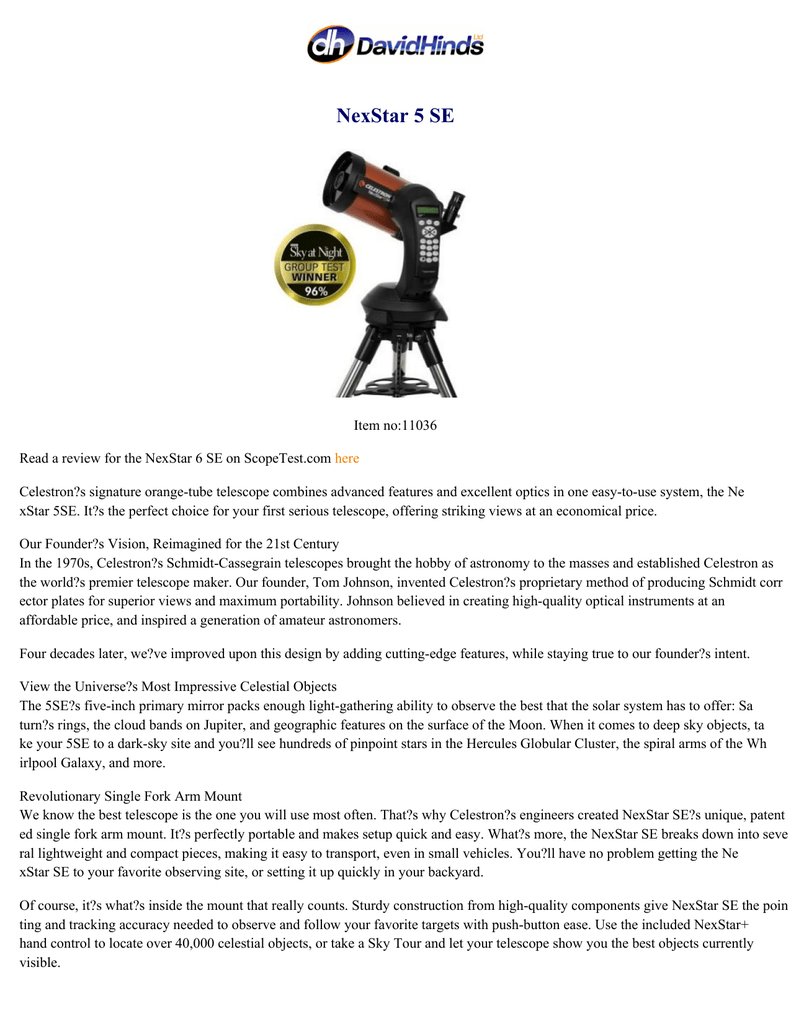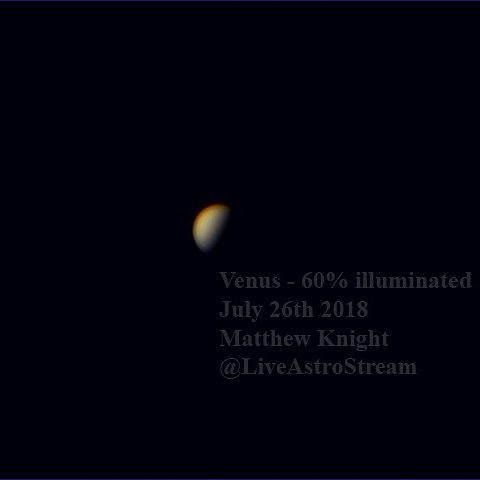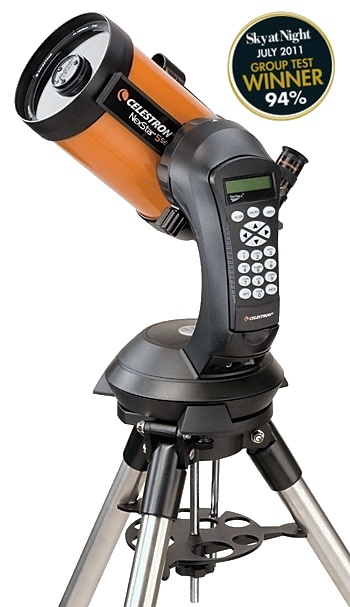- Celestron Nexstar 6se Manual
- Celestron Nexstar 8 Se Manual
- Celestron Nexstar 5 Se Manual
- Celestron Nexstar 60 Manual
- Celestron Nexstar 5se Manual
- Celestron 31142 Manual
4.
Catalog Keys: The NexStar has a key on the hand control to allow direct access to each of the catalogs in its 40,000 object database.
The NexStar contains the following catalogs in its database:
Messier – Complete list of all Messier objects.
NGC – Select list of all the deep-sky objects in the Revised New General Catalog.
Caldwell – A combination of the best NGC and IC objects.
Planets - All 8 planets in our Solar System plus the Moon and Sun.
Stars – A compiled list of the brightest stars from the SAO catalog.
List – For quick access, all of the best and most popular objects in the NexStar database have been broken down into lists
based on their type and/or common name:
CPC Manual - Celestron manual dated August 09, covers hand control. NexStar 5 SE Manual; NexStar 6/8 SE Manual; StarBright XLT Coatings Brochure. Written between the first and second editions of The NexStar User's Guide, includes coverage through version 4.18 and is a good resource for those upgrading from an older version to the version. Congratulations on your purchase of the Celestron NexStar! The NexStar ushers in a whole new generation of computer automated. Become familiar with your NexStar, so you should keep this manual handy until you have fully mastered your telescope’s operation. 5 NexStar 4 SE 5. Celestron NexStar 6 SE User Manual. Attaching the nexstar to the tripod. Celestron Optical devices. Manuals Directory ManualsDir.com - online owner manuals library. The Celestron NexStar tripod is a sturdy, heavy duty mount on which to place your NexStar 6/8' telescope. Ask the question you have about the Celestron Nexstar 5SE here simply to other product owners. Provide a clear and comprehensive description of the problem and your question. The better your problem and question is described, the easier it is for other Celestron Nexstar 5SE.
Common name listing of the brightest stars in the sky.
Named Stars
Alphabetical listing of over 50 of the most popular deep
sky objects.
Named Objects
Numeric-alphabetical listing of the most visually stunning
double, triple and quadruple stars in the sky.
Double Stars
Select list of the brightest variable stars with the shortest
period of changing magnitude.
Variable Stars
A unique list of some of the most recognizable star
patterns in the sky.
Asterisms
5.
Info: Displays coordinates and useful information about objects selected from the NexStar database.
6.
Tour: Activates the tour mode, which seeks out all the best objects for a given month and automatically slews the NexStar to
those objects.
7.
Enter: Pressing Enter allows you to select any of the NexStar functions, accept entered parameters and slew the telescope to
displayed objects.
8.
Undo:Undo will take you out of the current menu and display the previous level of the menu path. Press Undo repeatedly to get
back to a main menu or use it to erase data entered by mistake.
9.
Menu: Displays the many setup and utilities functions such as tracking rate and user defined objects and many others.
10. Scroll Keys: Used to scroll up and down within any of the menu lists. A double arrow symbol on the right side of the LCD
indicates that the scroll keys can be used to view additional information.
11. Rate: Instantly changes the rate of speed of the motors when the direction buttons are pressed.
12. RS-232 Jack: Allows you to interface with a computer and control the NexStar remotely.
H
H
a
a
n
n
d
d
C
Celestron Nexstar 6se Manual
C
Celestron Nexstar 8 Se Manual
o
o
n
n
t
t
r
r
o
o
Celestron Nexstar 5 Se Manual
l
l
O
O
p
p
e
e
r
r
a
a
t

t
i
i
o
o
n
n
Celestron Nexstar 60 Manual
This section describes the basic hand control procedures needed to operate the NexStar. These procedures are grouped into three
categories: Alignment, Setup and Utilities. The alignment section deals with the initial telescope alignment as well as finding objects in the
sky; the setup section discusses changing parameters such as tracking mode and tracking rate; finally, the last section reviews all of the
utility functions such as adjusting the telescopes slew limits and backlash compensation.
Alignment Procedure
Definition
'Altazimuth' or 'Alt-Az'
refers to a type of
mounting that allows a
telescope to move in
both altitude (up and
down) and azimuth (left
and right) with respect
to the ground. This is
the simplest form of
mounting in which the
telescope is attached
directly to a tripod.
In order for the NexStar to accurately point to objects in the sky, it must first be aligned to known
positions (stars) in the sky. With this information, the telescope can create a model of the sky, which it
uses to locate any object with known coordinates. There are many ways to align the NexStar with the
sky depending on what information the user is able to provide: SkyAlign uses your current date, time
and city to create an accurate model of the sky. Then the user can simply point the telescope to any three
bright celestial objects to accurately align the telescope with the sky. Auto Two-Star Align will ask the
user to choose and center the first alignment star, then the NexStar will automatically select and slew to
a second star for alignment. Two-Star Alignment requires the user to identify and manually slew the
telescope to the two alignment stars. One-Star Align is the same as Two-Star Align however only
requires you to align to one known star. Although not as accurate as the other alignment methods, One-
Star Align is the quickest way to find and track bright planets and objects in Altazimuth mode. Solar
System Align will display a list of visible daytime objects (planets and the moon) available to align the


11